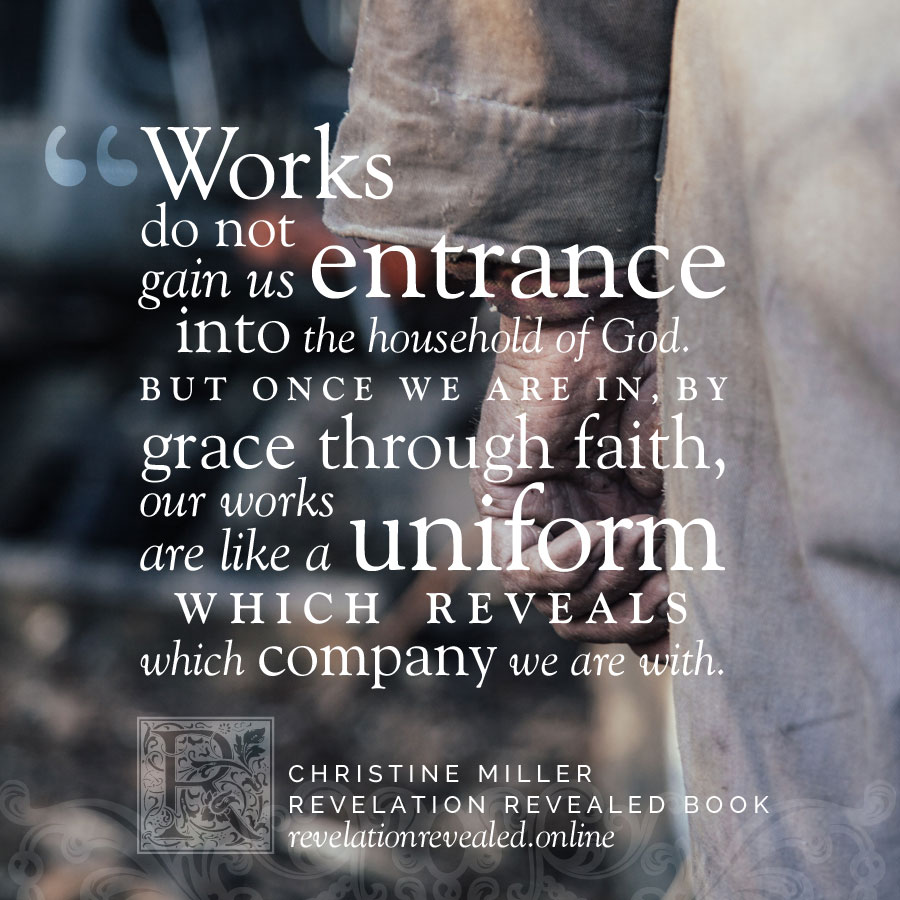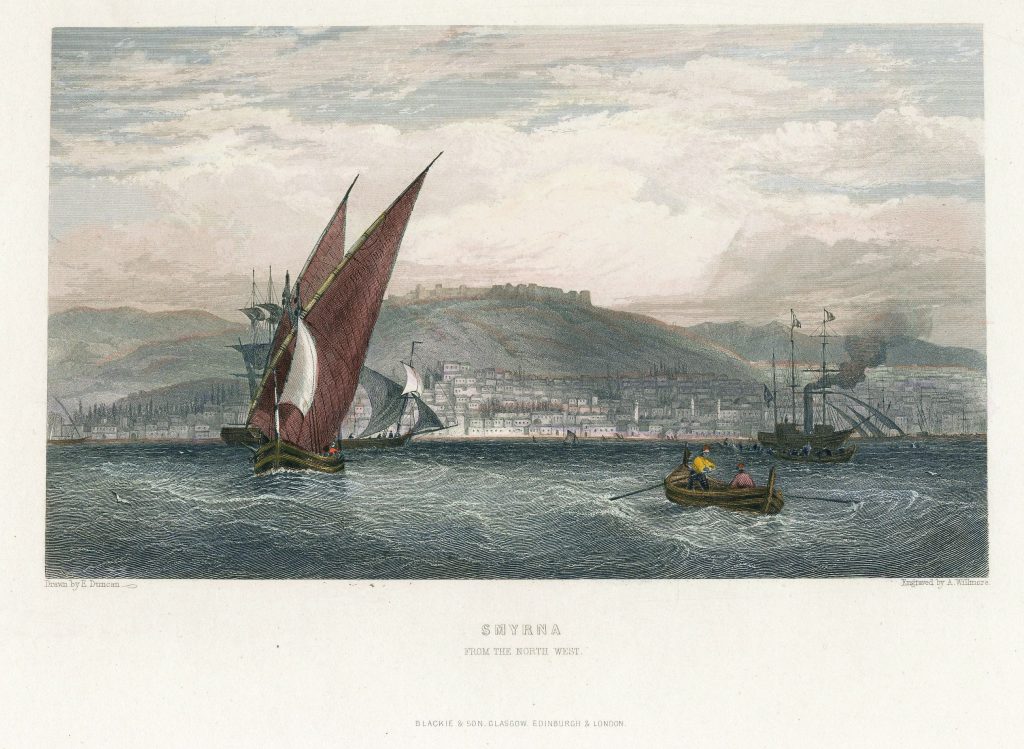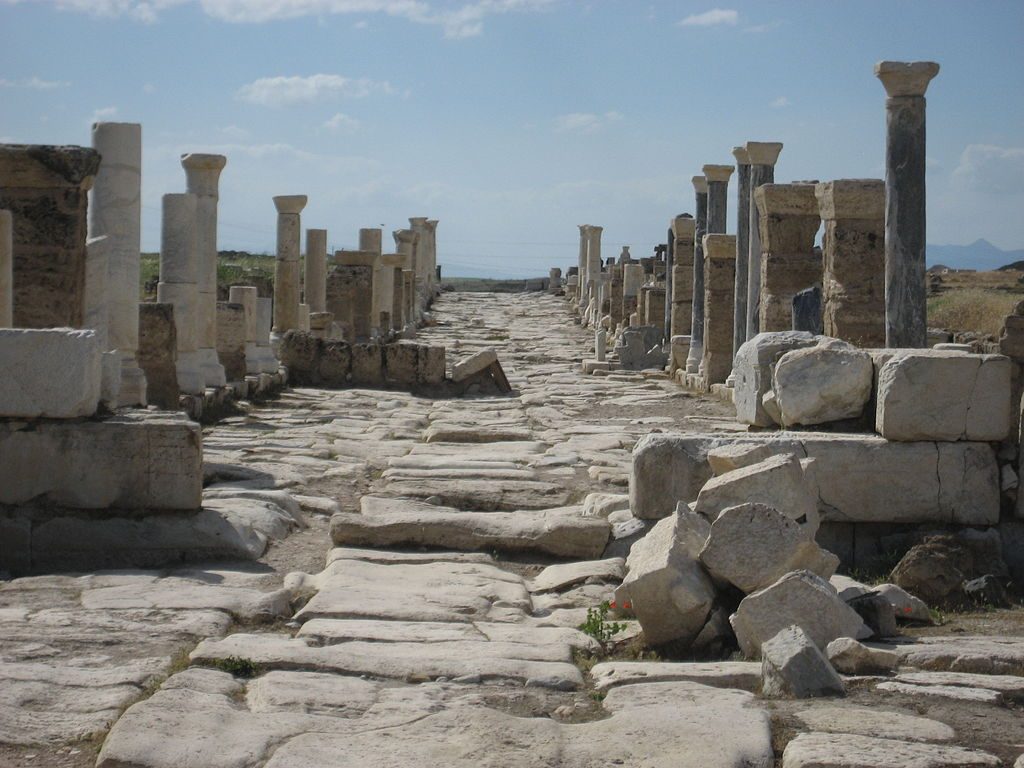
On Smyrna
The letter to the church at Smyrna (The Letters to the Seven Churches, pg. 12).
“The church of Smyrna (a very ancient, still flourishing commercial city in Ionia, beautifully located on the bay of Smyrna) was externally poor and persecuted, and had still greater tribulation in view, but is cheered with the prospect of the crown of life. It was the second century ruled by Polycarp, a pupil of John, and a faithful martyr.”
Philip Schaff, History of the Christian Church, Vol. 1, p. 380.
“Smyrna : In ancient times one of the most important and now by far the greatest of the cities of Asia Minor, has preserved an unbroken continuity of record and identity of name from the first dawn of history to the present time. … The situation of Smyrna on the path of commerce between Lydia and the west raised it during the 7th century [BC] to the height of power and splendour. It lay at the head of an arm of the sea, which reached far inland and admitted the Greek trading ships into the heart of Lydia. One of the great trade routes which cross Anatolia descends the Hermus valley past Sardis, and then diverging from the valley passes south of Mt. Sipylus and crosses a low pass into the little valley, about 7 miles long and 2 broad, where Smyrna lies between the mountains and the sea. Miletus, and later Ephesus, situated at the sea end of the other great trade route across Anatolia, competed for a time successfully with Smyrna, but both cities long ago lost their harbours, and Smyrna remains without a rival. … The beauty of the [ancient] city, clustering on the low ground, and rising tier over tier on the hillside, is frequently praised by the ancients and is celebrated on its coins.
“In the Roman period … Smyrna vied with Ephesus and Pergamum for the title ‘First (city) of Asia.’ A Christian church existed here from a very early time, having its origin in the considerable Jewish colony. Polycarp was bishop of Smyrna and was martyred there AD 155.”
“Smyrna,” The Encyclopaedia Britannica, Vol. 25, pgs. 281-282.

On Philadelphia
Philadelphia is the sixth of the seven churches addressed in Revelation. (The Letters to the Seven Churches, pg. 14).
“Philadelphia: A city of ancient Lydia in Asia Minor on the Cogamus River, 105 miles from Smyrna. It stood upon a terrace 650 ft. above the sea. Behind it are the volcanic cliffs to which the Turks have given the name of Devitt, or ‘inkwells’; on the other side of the city the land is exceedingly fertile, and there was produced a wine of whose excellence the celebrated Roman poet Virgil wrote. Philadelphia is not so ancient as many of the other cities of Asia Minor, for it was founded after 189 bc on one of the highways which led to the interior. … it sometimes bore the title of ‘Little Athens’ because of the magnificence of the temples and other public buildings which adorned it. Philadelphia quickly became an important and wealthy trade center, for as the coast cities declined, it grew in power, and retained its importance even until late Byzantine times.”
“Philadelphia,” International Standard Bible Encyclopedia.
On Laodicea
“The city of Laodicea was among the very wealthiest of the Roman Empire, and the place was renowned as a banking centre, and a place where medicine was not just practiced but researched, Laodicean eye-salve being sought after the world over. The citizens were so wealthy that when, in ad 60, a massive earthquake destroyed the place, they were able to decline an offer of financial help from the Roman Senate to rebuild. That is wealth indeed.”
William Cooper, Old Light on the Roman Church, Pt. 2, “Paul’s ‘Lost’ Letter to the Laodicean Church.”
“Towards the end of the Roman Republic and under the first emperors, Laodicea, benefiting from its advantageous position on a trade route, became one of the most important and flourishing commercial cities of Asia Minor, in which large money transactions and an extensive trade in black wool were carried on. The area often suffered from earthquakes, especially from the great shock that occurred in the reign of Nero (60 AD) in which the town was completely destroyed. But the inhabitants declined imperial assistance to rebuild the city and restored it from their own means. … Its wealthy citizens embellished Laodicea with beautiful monuments. … The city minted its own coins, the inscriptions of which show evidence of the worship of Zeus, Æsculapius, Apollo, and the emperors.”
“Laodicea on the Lycus,” Wikipedia.

The Synagogue of Satan
I am not sure anyone knows what Jesus was referring to when He condemned those who say they are Jews but are not, instead being of the synagogue of Satan. (The Letters to the Seven Churches, pg. 12).
“Say they are Jews, and are not—Jews by national descent, but not spiritually of ‘the true circumcision.’”
Jamieson, Faussett, and Brown’s Commentary on Revelation 2:9.
I am constantly on guard for anti-Semitism, especially in the old histories and commentaries, in the discussion of this verse. Any member of any group, no matter what they profess with their mouths, can be in ‘the service of Satan,’ to quote Barnes. That does not mean that all members of that group are so.
“The reference to tribulation and to the false Jews brings to the modern reader the picture of the later martyrdom of Polycarp at Smyrna, in which the Jews played such a zealous part as to break the Sabbath by bringing fagots into the stadium to light his fire.”
LeRoy Froom, The Prophetic Faith of Our Fathers, Vol. 1, p. 92.
“‘But are the synagogue of Satan.’ Deserve rather to be called the synagogue of Satan. The synagogue was a Jewish place of worship … but the word originally denoted the assembly or congregation. The meaning here is plain, that though they worshipped in a synagogue, and professed to be the worshippers of God, yet they were not worthy of the name, and deserved rather to be regarded as in the service of Satan.”
Albert Barnes, Notes on … Revelation, p. 71.
“The authority of Emperors, Kings, and Princes, is human. The authority of Councils, Synods, Bishops, and Presbyters, is human. The authority of the Prophets is divine, and comprehends the sum of religion, reckoning Moses and the Apostles among the Prophets; and if an Angel from Heaven preach any other gospel, than what they have delivered, let him be accursed. Their writings contain the covenant between God and his people, with instructions for keeping this covenant; instances of God’s judgments upon them that break it: and predictions of things to come. While the people of God keep the covenant, they continue to be his people: when they break it they cease to be his people or church, and become the Synagogue of Satan, who say they are Jews and are not. And no power on earth is authorized to alter this covenant.”
Isaac Newton, Observations upon the Prophecies of Daniel, and the Apocalypse of St. John, Chapter 1, published 1733 (bold emphasis only added).

I must here mention that there is also a theory I have encountered which equates the synagogue of Satan with synagogues of the Samaritans, and while I searched for a reference presenting this idea that I could mention here, the ones I found did not meet a basic standard of scholarship. That does not mean it may not be a meritorious idea, just that referencing it as such will have to wait.